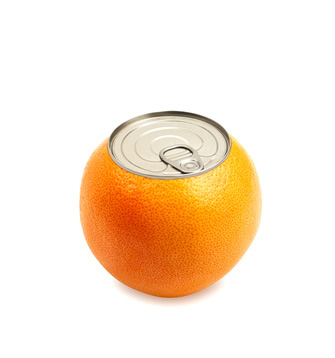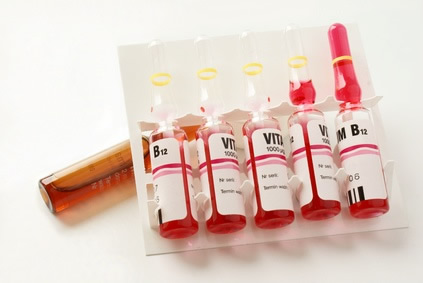Hesperidin (C28H34O15) is a flavanone glycoside comprised of the flavanone hesperitin and the disaccharide rutinose. The flavonoid hesperidin is primarily found in citrus fruits such as oranges and lemons. Maximum of the hesperidin in these fruits are found in the membranes and peel. A lack of this bioflavonoid in the diet has been linked with abnormal capillary leakiness as well as pain in the extremities causing aches, weakness and night leg cramps. Hesperidin alone, or in combination with other bioflavonoids, is usually used for vascular conditions such as varicose veins and hemorrhoids.
Hesperidin Food Sources
Oranges, tangerine, lemons, grapefruit, unfiltered orange juice, orange marmalade are the richest sources of hesperidin.
Hesperidin Benefits
Hesperidin, is most often used for blood vessel conditions such as hemorrhoids, varicose veins, and poor circulation. Hesperidin works best when given with Vitamin C and other bioflavonoids. Hesperidin provides necessary support molecules for vitamin C absorption and is most effective when taken at the same time. Hesperidin with Vitamin C may assist in the cure of colds by reducing the severity and duration of symptoms, relaxation of the symptoms of hay fever, assist in the maintenance of peripheral circulation. Hesperidin, in combination with a flavone glycoside named diosmin, is used in Europe for the therapy of hemorrhoids and venous insufficiency . A 500-mg dose of this product is comprised of 450 mg of diosmin and 50 mg of hesperidin.
 In two-month, double-blind, placebo-controlled study of 120 patients with recurrent hemorrhoid flare-ups found that therapy with combined hesperidin and diosmin significantly reduced the frequency and severity of hemorrhoid attacks. In a twelve-week trial of 50 pregnant women suffering acute hemorrhoids, micronized hesperidin/diosmin treatment was reported to be a effective and safe therapy. Of the participants , 66% obtained relief from acute hemorrhoid symptoms within 4 days, and noteworthy fewer patients experienced a relapse of symptoms during the post-birth period. In another study, this combination was found to compare favorably with surgical treatment of hemorrhoids.
In two-month, double-blind, placebo-controlled study of 120 patients with recurrent hemorrhoid flare-ups found that therapy with combined hesperidin and diosmin significantly reduced the frequency and severity of hemorrhoid attacks. In a twelve-week trial of 50 pregnant women suffering acute hemorrhoids, micronized hesperidin/diosmin treatment was reported to be a effective and safe therapy. Of the participants , 66% obtained relief from acute hemorrhoid symptoms within 4 days, and noteworthy fewer patients experienced a relapse of symptoms during the post-birth period. In another study, this combination was found to compare favorably with surgical treatment of hemorrhoids.
Supplementation containing a combination of hesperidin, ascorbic acid and butcher’s broom may help treat chronic venous insufficiency, according to a 2007 research reported in” International Angiology“. A multicentre international study involving 5000 participant with chronic venous insufficiency evaluated Diosmin. Patients were treated with 50 mg hesperidin and 450 mg diosmin daily for 6 months. Continuous clinical amelioration was found throughout the trial also improvements in quality of life scores for patients. Another 2-month, double-blind, placebo-controlled study evaluated the effects of hesperidin/diosmin in 107 patient with nonhealing leg ulcers caused by venous insufficiency or other conditions. The findings indicated that cure significantly improved the rate of healing.
Hesperidin improves the health of capillaries by reducing the capillary permeability. Also, can decrease histamine release from mast cells by strengthening the cell membrane. Hesperidin fights allergic reactions by blocking the release of histamine.
Hesperidin exhibited important anti-cancer property against some selected human carcinoma cell lines. In Japanese researches suggest that the dietary use of diosmin and hesperidin may provide a protective activity against some types of cancer in rats. These researches reported that hesperidin and diosmin appear to inhibit the development of colonic and oral neoplasms, and significantly reduce certain cell proliferation biomarkers.
 Homocysteine is a naturally synthesized by-product of methionine metabolism. Elevated levels of homocysteine are associated with a reduce in cognitive function and brain vascular complications. Researches shows that high levels of homocysteine may important enhance the risk of heart disease and stroke. Methylcobalamin may perform its neuroprotective activity through increased methylation, acceleration of nerve cell growth or its capability to promote wholesome homocysteine rates. Methyl B12 acts as a cofactor in the conversion of homocysteine to methionine. Methylcobalamin and 5-methyltetrahydrofolate are very important to the elimination of homocysteine. When treated with 1000 micrograms of methylcobalamin daily for 3 weeks, homocysteine levels decreased significantly.
Homocysteine is a naturally synthesized by-product of methionine metabolism. Elevated levels of homocysteine are associated with a reduce in cognitive function and brain vascular complications. Researches shows that high levels of homocysteine may important enhance the risk of heart disease and stroke. Methylcobalamin may perform its neuroprotective activity through increased methylation, acceleration of nerve cell growth or its capability to promote wholesome homocysteine rates. Methyl B12 acts as a cofactor in the conversion of homocysteine to methionine. Methylcobalamin and 5-methyltetrahydrofolate are very important to the elimination of homocysteine. When treated with 1000 micrograms of methylcobalamin daily for 3 weeks, homocysteine levels decreased significantly. years. This study, involved over 100 studies of patients with problems ranging from infections, respiratory ailments, vascular diseases, psychological problems, allergies, diabetes, arthritis, trauma and others. The study found amelioration with homeopathic cure in most categories of problems, and concluded that the evidence was “sufficient for establishing homeopathy as a regular therapy for certain indications.
years. This study, involved over 100 studies of patients with problems ranging from infections, respiratory ailments, vascular diseases, psychological problems, allergies, diabetes, arthritis, trauma and others. The study found amelioration with homeopathic cure in most categories of problems, and concluded that the evidence was “sufficient for establishing homeopathy as a regular therapy for certain indications. efficacious at fighting infection as tetracycline in treating acne. Another researches has shown that myrrhanol-A, a triterpene isolated from guggul gum, is a strong anti-inflammatory, and significantly decreases pain and stiffness in individuals with osteoarthritis. The guggulsterones may be able to decrease cholesterol, while myrrhanol A has anti-inflammatory properties. Guggulipid has been found to inhibit platelet aggregation and improve fibrinolysis.
efficacious at fighting infection as tetracycline in treating acne. Another researches has shown that myrrhanol-A, a triterpene isolated from guggul gum, is a strong anti-inflammatory, and significantly decreases pain and stiffness in individuals with osteoarthritis. The guggulsterones may be able to decrease cholesterol, while myrrhanol A has anti-inflammatory properties. Guggulipid has been found to inhibit platelet aggregation and improve fibrinolysis.